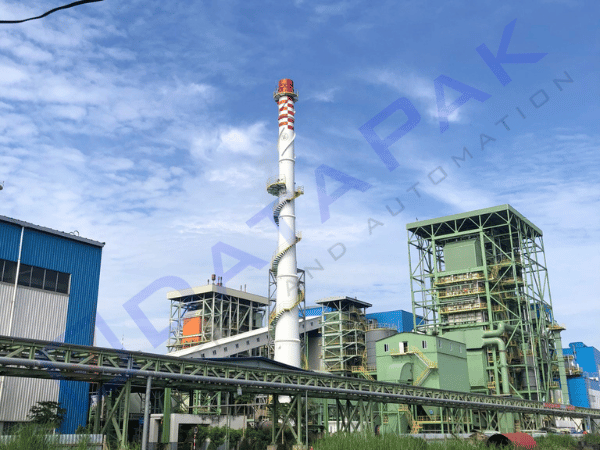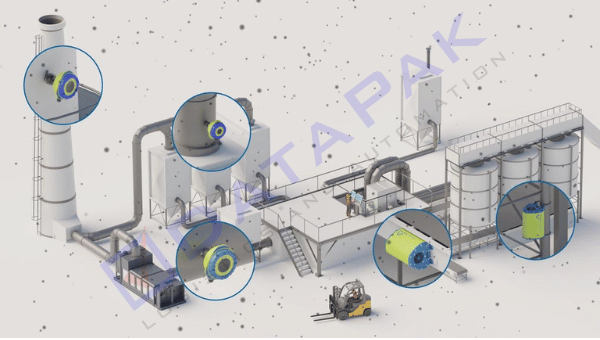Air emissions are one of the main causes of air pollution, which directly affects human and animal health. To control air pollution, production, business, and service facilities that generate air emissions must conduct regular air emissions monitoring.
Air emissions monitoring is the activity of measuring and analyzing the physical, chemical, and biological properties of air emissions. Through air emissions monitoring, authorities can assess air quality, identify sources of pollution, and then take measures to control and reduce air pollution.
Common Problems Encountered With Air Emissions Monitoring Systems
Air emissions monitoring systems are complex systems that include a variety of equipment and technologies. During operation, air emissions monitoring systems may encounter the following problems:
Lifespan of air emissions monitoring systems: The devices in air emissions monitoring systems have different lifespans, depending on the quality of the devices and operating conditions. If they are not regularly maintained, the devices may be damaged, leading to inaccurate monitoring results.
The average lifespan of air emissions monitoring systems typically ranges from 5 to 10 years. However, the actual lifespan of the system may be shorter or longer, depending on the factors mentioned above.
Here is the estimated lifespan of some common types of air emissions monitoring systems:
- Manual air emissions monitoring system: About 5 years
- Simple automatic air emissions monitoring system: About 7 years
- Complex automatic air emissions monitoring system: About 10 years
Operation and maintenance costs of air emissions monitoring systems: Air emissions monitoring systems need to be operated and maintained regularly to ensure accurate and efficient operation. The operating and maintenance costs of air emissions monitoring systems can account for 10-20% of the total cost of air emissions monitoring.
Here are some tips for improving the performance of air emissions monitoring systems:
- Select the appropriate type of air emissions monitoring system for your needs.
- Regularly maintain and calibrate your air emissions monitoring system.
- Train your staff on how to operate and maintain your air emissions monitoring system.
By following these tips, you can help to ensure that your air emissions monitoring system is performing at its best and providing accurate data for air quality management.

There Are Two Options For Building An Air Emissions Monitoring System:
- Self-construction: The production, business, and service facilities design, install, and operate the air emissions monitoring system themselves. This option has the advantage of being proactive and requiring high levels of expertise and experience to implement.
- Air emissions monitoring service contracting: The production, business, and service facilities contract a service provider to provide air emissions monitoring services. This option has the advantage of being simple, convenient, and not requiring initial investment costs. However, the facility must select a reputable service provider with the necessary expertise to ensure the quality of the monitoring results.
Air Emissions Monitoring System Cost Allocation
The cost of building an air emissions monitoring system includes the following items:
- Equipment costs: Equipment costs account for a large proportion of the total cost of building an air emissions monitoring system.
- Installation costs: Installation costs depend on the scale and nature of the air emissions monitoring system.
- Operation and maintenance costs: The operating and maintenance costs of an air emissions monitoring system include electricity, water, labor, materials, chemicals, etc.
When allocating the cost of building an air emissions monitoring system, it is important to note the following:
- Select equipment with good quality and suitability for the scale and nature of the air emissions monitoring system.
- Select a reputable installation company with high levels of expertise and experience to ensure the quality of the installation.
- Establish a regular operating and maintenance plan for the air emissions monitoring system to ensure accurate and efficient operation.
Air Emissions Monitoring Equipment Selection
When selecting air emissions monitoring equipment, it is important to consider the following criteria:
- Technical standards: The equipment must meet the technical standards and regulations of the law on air emissions monitoring.
- Features and operating capabilities: The equipment must have features and operating capabilities that are suitable for the scale and nature of the air emissions monitoring system.
- Durability and reliability: The equipment must be durable and reliable.
- Price: The equipment price must be affordable for the facility.
The air emissions monitoring system is an important tool in air pollution protection. Businesses need to carefully consider the factors before selecting the air emissions monitoring system construction option that is suitable for their needs.
With over 15 years of experience in the automation industry, Datapak is honored to be trusted and accompanied by many customers. Datapak specializes in providing automation solutions, including air emissions monitoring systems, and is the authorized distributor of many famous brands such as Huba, Pilz, Hydronix, Sintrol, etc., ensuring to bring reasonable-priced and quality products and services.






